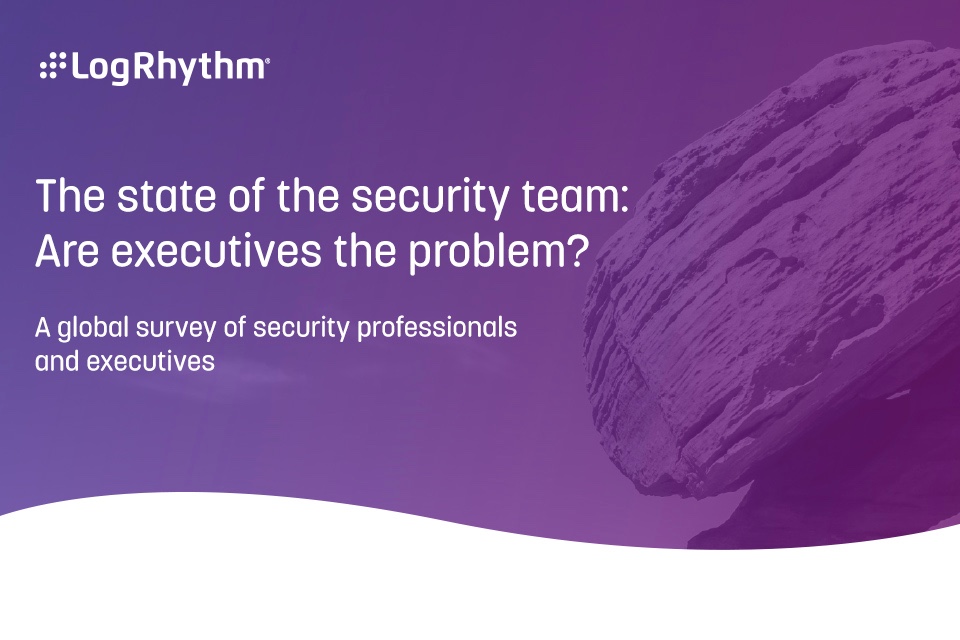Where is cybersecurity in 2020 and where are we heading?

At the start of 2020, smart businesses were already preparing their security practices against threats including ransomware and phishing. That was before the pandemic, which has resulted in a shift in traditional working practices and a significant rise in remote working this year that has introduced the possibility of additional security risks. Paul Colwell (pictured), […]
Escaping from Data Lockdown with a Digital Evolution

With data amassing at an exponential rate, digital transformation continues to be throttled as businesses struggle to achieve the insight they need from the data. To achieve value from data, businesses need to be able to access what they need, when they need, by the right people, in a usable format. Peter Ruffley, CEO, Zizo, has […]
LogRhythm NextGen SIEM Platform – Build your security program on a solid foundation

By LogRhythm Align your team, technology, and processes to see broadly across your IT and operating environments, uncover threats, and minimise risk — all within a single, unified platform. The LogRhythm NextGen SIEM Platform is at the centre of thousands of SOCs worldwide. Detect threats earlier and faster. When it comes to stopping threats, seconds matter. That’s […]
The state of the security team: Are executives the problem?

By LogRhythm A global survey of security professionals and executives by LogRhythm Amid a slew of statistics on how job stress is impacting security professionals, we sought to learn the causes of the tension and anxiety — as well understand potential ways teams might alleviate and remediate the potential of job burnout. We ran a […]
Joiner-Mover-Leaver process: Solve it once and for all?

By Tenfold Security JML processes give IT and HR departments regular headaches and often create quite hefty conflicts between those two departments. What is this all about? When a new employee joins your organization, HR will know about them first, as they sign the contracts and do the onboarding. Today, many employees will require IT […]
Why endpoint security matters more than ever

The swiftly evolving threat landscape, combined with the huge increase in remote working, means that securing your organisation’s endpoints has never been more critical. Here, George Glass, Head of Threat Intelligence at Redscan, explains the importance of endpoint security and why detecting and responding to the latest threats demands greater endpoint visibility and specialist expertise… […]
Identity Access Management vs. Access Rights Management – What’s the Difference?

The terms access management (short: AM; also referred to as access rights management or just rights management) and identity & access management (short: IAM) are often used synonymously. In practice, however, they do not stand for the same thing. In this article, we are going to take a closer look at the difference between access rights management software and identity/access management solutions. Check out the article at https://www.tenfold-security.com/en/identity-access-management-vs-permission-management-whats-the-difference/ If you are […]
Meeting the Tests to get out of Data Lockdown

Digital transformation of any business has always been hampered by making sense of underlying data. And that data has been growing in volume at an unprecedented rate driven by the growth of IoT. It’s the perfect storm – the need for real-time information being increasingly distanced by the rate at which the data volume is […]
User Access Review – What’s That?

By Tenfold Security Users come, they stay, they leave, they move around between departments and they collect privileges on the way. That’s OK, they need privileges to do their jobs. But do they need all the privileges they have, always? That’s a question you need to ask yourself, for every user, repeatedly. This article covers what is meant by a user access […]
Securing a hybrid and agile workforce

2020 has forced businesses to revise many of their operations. One significant transition being the shift to a remote working model, for which many were unprepared in terms of equipment, infrastructure and security. As the Government now urges people to return to work, we’re already seeing a shift towards a hybrid workforce, with many employees splitting their […]


